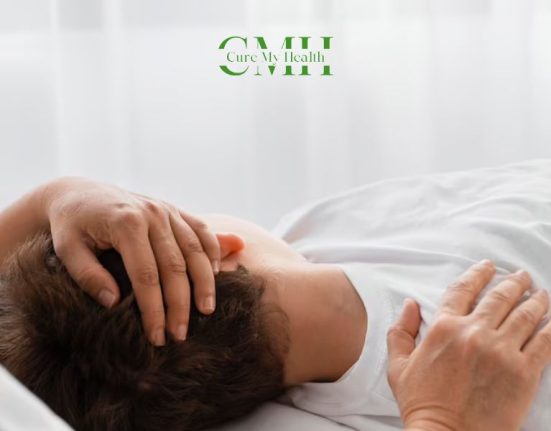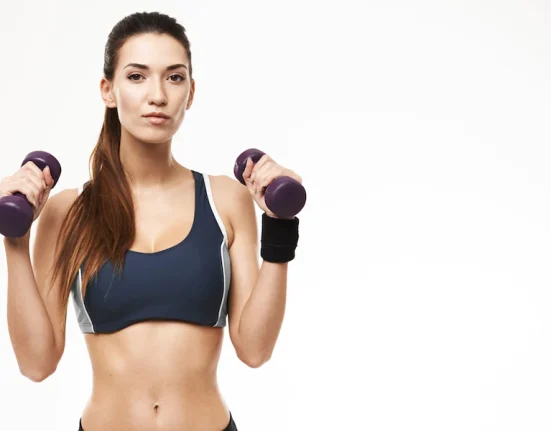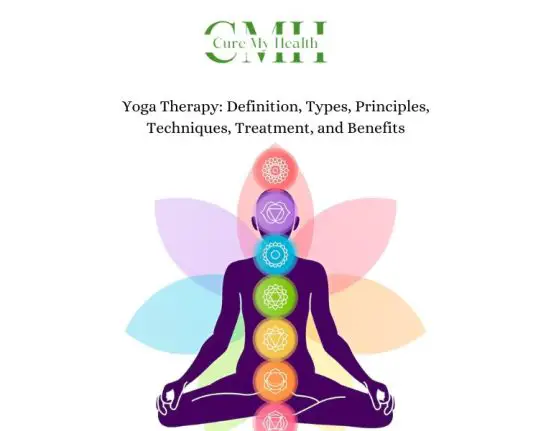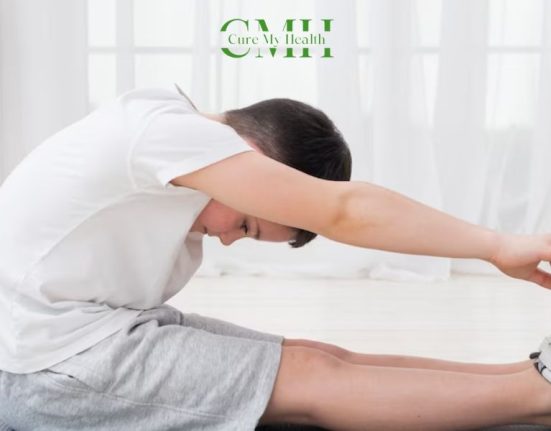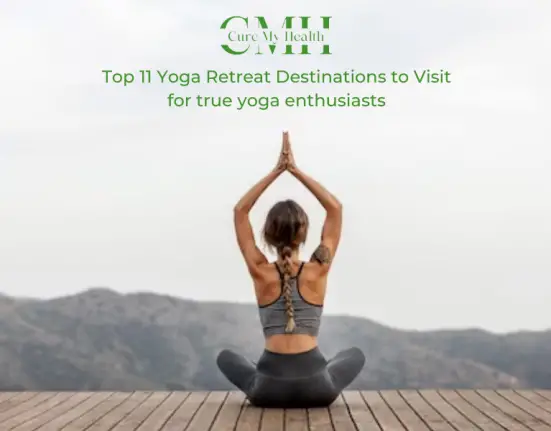Introduction
Yoga is a practice that can be modified to meet the needs and abilities of different individuals. Depending on one’s physical condition, age, flexibility, and strength, certain types of yoga poses may be more beneficial than others. This is why it is important to have a basic understanding of the different types of yoga poses, so that you can choose the ones that are best suited for your needs.
There are a wide variety of yoga poses that range from gentle and restorative to more challenging and dynamic. Each type of pose offers unique benefits and can be used to achieve different goals. Some yoga poses are designed to help with relaxation and stress reduction, while others focus on building strength, improving flexibility, or enhancing balance. Certain types of yoga poses are better suited for specific types of yogis. For example, beginners may benefit from simple and accessible poses that are easy to perform, while experienced yogis may enjoy more challenging and complex poses that require greater strength and flexibility.
In this context, it is essential to have a basic understanding of the different types of yoga poses and their benefits. This knowledge can help you to choose the right type of poses for your needs and abilities, and to achieve your yoga goals more effectively.
Here are 10 popular yoga poses for beginners, intermediates, and advanced yogis:
1. Downward-Facing Dog (Adho Mukha Svanasana): This pose is great for stretching the hamstrings and calves, as well as strengthening the arms and shoulders. Beginners can start with bent knees and work their way towards straight legs. Downward-Facing Dog, or Adho Mukha Svanasana in Sanskrit, is a yoga pose that is commonly practised in both traditional and modern styles of yoga. It is a fundamental pose that is often used as a transitional pose between other asanas (yoga postures) or as a pose on its own. Here’s how to do it:
Start on your hands and knees, with your wrists directly under your shoulders and your knees directly under your hips.Spread your fingers wide and press down through your palms and knuckles, making sure your weight is evenly distributed between your hands and feet. Exhale and lift your knees off the ground, straightening your legs and lifting your hips towards the ceiling. Lengthen your spine and draw your shoulder blades down your back, as you push your hands into the mat to create length and space in your torso. Relax your neck and gaze towards your shins, or between your feet. Hold the pose for 5-10 breaths, then release by dropping your knees back to the mat.
Downward-Facing Dog is a great pose for stretching the hamstrings, calves, and spine, as well as strengthening the arms and shoulders. It can also help to relieve stress and tension in the body and mind.

2. Warrior II (Virabhadrasana II): This pose strengthens the legs and core, while also opening the hips and chest. Beginners can start with a shorter stance and work towards a deeper lunge. Warrior II, also known as Virabhadrasana II, is a yoga pose that is commonly practised in many yoga styles. It is a standing pose that strengthens and stretches the legs, hips, and torso, while also improving balance and focus.
To practise Warrior II, begin by standing at the front of your mat with your feet hip-distance apart. Step your left foot back about 3-4 feet and turn your left foot out to a 90-degree angle, while keeping your right foot pointing forward. Extend your arms out to your sides, parallel to the floor, with your palms facing down. Bend your right knee until your thigh is parallel to the floor, making sure that your knee is directly over your ankle and not extending past it. Keep your hips facing forward and engage your core muscles to maintain balance. Gaze out over your right fingertips. Hold the pose for several deep breaths, then release and repeat on the other side.
In addition to its physical benefits, Warrior II can also be a great pose for cultivating mental strength and determination. As you hold the pose, focus on your breath and let go of any distractions or worries that may arise. With practice, you can build both physical and mental resilience through this powerful yoga pose.
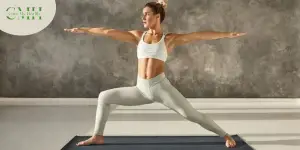
3. Tree Pose (Vrksasana): This pose improves balance and strengthens the legs and core. Beginners can start with their foot on their ankle instead of their thigh. Tree Pose, also known as Vrksasana, is a yoga pose that is commonly practised in many yoga styles. It is a standing balance pose that strengthens the legs, ankles, and core muscles while also improving focus and concentration.
To practise Tree Pose, begin by standing at the front of your mat with your feet hip-distance apart. Shift your weight onto your left foot and bend your right knee, bringing the sole of your right foot to rest on your left inner thigh. Make sure your right knee is pointing out to the side and that your foot is pressing firmly into your thigh. Bring your hands together in front of your heart in prayer position or extend your arms overhead, reaching toward the sky. Lengthen through your spine and engage your core muscles to maintain balance. Focus your gaze on a fixed point in front of you and hold the pose for several deep breaths, then release and repeat on the other side.
In addition to its physical benefits, Tree Pose can also be a great pose for cultivating mental focus and concentration. As you hold the pose, focus on your breath and let go of any distractions or worries that may arise. With practice, you can improve your balance and mental clarity through this powerful yoga pose.
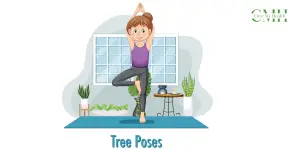
4. Triangle Pose (Trikonasana): This pose stretches the hamstrings and hips, while also strengthening the legs and core. Beginners can use a block or place their hand on their shin if they can’t reach the floor. Triangle Pose, also known as Trikonasana, is a yoga pose that is commonly practised in many yoga styles. It is a standing pose that stretches and strengthens the legs, hips, spine, and shoulders while also improving balance and flexibility.
To practise Triangle Pose, begin by standing at the front of your mat with your feet hip-distance apart. Step your left foot back about 3-4 feet and turn your left foot out to a 90-degree angle, while keeping your right foot pointing forward. Extend your arms out to your sides, parallel to the floor, with your palms facing down. Reach your right hand forward as far as you can, then hinge at your right hip and lower your right hand to your shin, ankle, or the floor on the outside of your right foot. Reach your left arm up toward the sky, creating a straight line from your left fingertips to your left foot. Keep your hips facing forward and engage your core muscles to maintain balance. Gaze up at your left hand or straight ahead if you have neck issues. Hold the pose for several deep breaths, then release and repeat on the other side.
In addition to its physical benefits, Triangle Pose can also be a great pose for stimulating the digestive organs and improving overall circulation. As you hold the pose, focus on your breath and feel the stretch in your entire body. With practice, you can build both physical and mental strength through this powerful yoga pose.
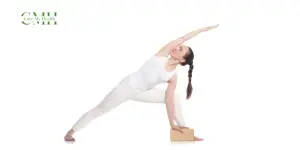
5. Crow Pose (Bakasana): This advanced pose strengthens the arms and core, while also improving balance and focus. Beginners can start with their toes on the ground and work towards lifting their feet. Crow Pose, also known as Bakasana, is an arm balance yoga pose that requires strength, balance, and concentration. It is a challenging pose that strengthens the arms, wrists, and core muscles while also improving balance and focus.
To practise Crow Pose, begin in a squatting position with your feet hip-distance apart and your toes pointing forward. Place your hands on the mat shoulder-distance apart, with your fingers spread wide and your palms flat on the ground. Bend your elbows and shift your weight forward onto your hands, coming up onto your tiptoes. Keep your elbows bent and hug them in toward your sides as you lift your hips up. Gently lift one foot off the ground and place it on the back of your opposite upper arm, just above the elbow. Then, lift your other foot off the ground and bring it up to rest on your opposite arm as well. Keep your gaze focused on a point on the floor in front of you. Hold the pose for several deep breaths, then release and rest in Child’s Pose or come back to the squatting position.
In addition to its physical benefits, Crow Pose can also be a great pose for building mental strength and focus. As you hold the pose, focus on your breath and let go of any distractions or worries that may arise. With practice, you can build both physical and mental resilience through this powerful yoga pose.

6. Headstand (Sirsasana): This advanced pose strengthens the shoulders and core, while also improving focus and balance. Beginners can start with their feet against the wall for support. Headstand, also known as Sirsasana, is an advanced yoga pose that requires strength, balance, and concentration. It is an inversion pose that offers many benefits for the body and mind, including increased circulation, improved digestion, and reduced stress. To practise Headstand, begin by kneeling on the mat with your forearms on the ground, shoulder-distance apart. Interlace your fingers, creating a cup shape with your hands.
Place the crown of your head on the ground, just behind your hands. Tuck your toes under and lift your hips up, straightening your legs. Slowly walk your feet in toward your head until your hips are directly over your shoulders. Keep your gaze focused on a point on the ground and engage your core muscles to maintain balance.
When you feel ready, slowly lift one leg up toward the ceiling, then the other. Keep your legs straight and your feet flexed. Hold the pose for several deep breaths, then slowly lower your legs back down to the ground.
In addition to its physical benefits, Headstand can also be a great pose for building mental strength and focus. As you hold the pose, focus on your breath and let go of any distractions or worries that may arise. With practice, you can build both physical and mental resilience through this powerful yoga pose. It’s important to practise Headstand under the guidance of a qualified yoga teacher, especially if you are a beginner. If you have neck or shoulder issues, or if you are menstruating, it’s best to avoid this pose.
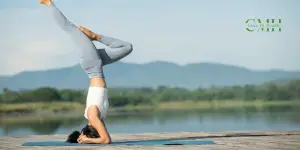
7. Camel Pose (Ustrasana): This intermediate pose stretches the chest and opens the heart, while also strengthening the back and shoulders. Beginners can keep their hands on their hips instead of reaching for their heels.
Camel Pose, also known as Ustrasana, is a backbend yoga pose that stretches the front of the body, including the chest, shoulders, and abdomen. It also strengthens the back muscles and improves spinal flexibility.
To practise Camel Pose, begin by kneeling on the mat with your knees hip-distance apart. Place your hands on your lower back, with your fingers pointing down and your palms resting on your sacrum.
Press your hips forward as you inhale and begin to arch your back, leaning back slowly. As you continue to lean back, reach your right hand back and grasp your right heel, then reach your left hand back and grasp your left heel. If you can’t reach your heels, keep your hands on your lower back or rest them on your hips. Keep your gaze up toward the ceiling and hold the pose for several deep breaths. When you’re ready to release, slowly come up to a neutral position, then sit back on your heels.
In addition to its physical benefits, Camel Pose can also be a great pose for opening the heart and promoting emotional balance. As you hold the pose, focus on your breath and allow any emotions to surface without judgement of or attachment. With practice, you can build both physical and emotional resilience through this powerful yoga pose. It’s important to practise Camel Pose under the guidance of a qualified yoga teacher, especially if you are a beginner or have any back or neck issues. If you experience discomfort or pain in the pose, come out of it slowly and carefully.

8. Bridge Pose (Setu Bandha Sarvangasana): This pose strengthens the glutes and hamstrings, while also opening the chest and improving spinal flexibility. Beginners can keep their feet on the ground instead of lifting their hips. Bridge Pose, also known as Setu Bandha Sarvangasana, is a backbend yoga pose that strengthens the back muscles, opens the chest and shoulders, and stretches the hip flexors. It is a gentle yet powerful pose that can be practised by yogis of all levels.
To practise Bridge Pose, begin by lying on your back with your knees bent and your feet hip-distance apart. Place your arms alongside your body, with your palms facing down. Press your feet into the ground as you inhale and lift your hips up toward the ceiling, keeping your feet and knees hip-distance apart. Clasp your hands together underneath your body, or keep your palms flat on the ground. Roll your shoulders underneath your body, opening up your chest and stretching your shoulders. Hold the pose for several deep breaths, then release by slowly rolling your spine back down to the ground.
In addition to its physical benefits, Bridge Pose can also be a great pose for reducing stress and anxiety, as it calms the mind and soothes the nervous system. As you hold the pose, focus on your breath and allow any tension or stress to melt away. With practice, you can build both physical and mental resilience through this powerful yoga pose. It’s important to practise Bridge Pose under the guidance of a qualified yoga teacher, especially if you have any back or neck issues. If you experience discomfort or pain in the pose, come out of it slowly and carefully.
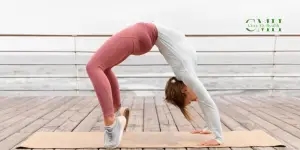
9. Pigeon Pose (Eka Pada Rajakapotasana):
This pose stretches the hips and glutes, while also improving spinal flexibility. Beginners can use a block or blanket under their hip for support.
Pigeon Pose, also known as Eka Pada Rajakapotasana, is a yoga asana that targets the hips and thighs. It is a great pose for stretching the hip flexors and increasing flexibility in the hips.
To come into Pigeon Pose, start in a high plank position and bring your right knee forward to the right wrist. Your right foot should be near your left hip. Your left leg can stay extended behind you or you can fold it under your body for a deeper stretch. Make sure your right shin is parallel to the front of the mat. From here, slowly lower down onto your forearms or rest your forehead on the mat. You can stay here for several breaths, feeling the stretch in your right hip and thigh. If you want to deepen the stretch, you can walk your hands forward and lengthen your torso.When you are ready to come out of the pose, slowly lift yourself back up and return to a high plank position. Repeat the pose on the other side. Pigeon Pose is a great pose for anyone looking to increase hip flexibility and relieve tension in the hips and thighs. It can be modified for beginners by using props such as blocks or blankets to support the hips. As with any yoga pose, it is important to listen to your body and only go as deep into the pose as feels comfortable for you.
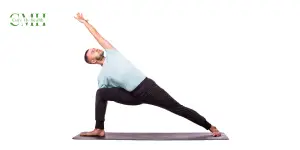
10. Lotus Pose (Padmasana): This advanced pose improves flexibility and focus, while also calming the mind. Beginners can start with Easy Pose (Sukhasana) and work towards crossing their legs in Lotus Pose.Lotus Pose, or Padmasana in Sanskrit, is a seated yoga pose that is commonly used for meditation and pranayama (breathing exercises). This pose is a great way to calm the mind, increase focus, and promote relaxation. To come into Lotus Pose, begin by sitting on the floor with your legs extended in front of you. Next, bend your right knee and bring your right foot onto your left thigh, with the sole of your foot facing upward. Then, bend your left knee and bring your left foot onto your right thigh, with the sole of your foot facing upward. Your knees should be touching the ground, and your feet should be close to your torso. Place your hands on your knees or in a mudra of your choice, with palms facing upward or downward. Straighten your spine and relax your shoulders. Close your eyes and focus on your breath.
If Lotus Pose is too challenging, you can modify the pose by sitting in Half Lotus Pose, with only one foot on the opposite thigh, or sitting cross-legged with your ankles in front of each other. Lotus Pose is a powerful pose for meditation, as it helps to calm the mind and promote a sense of inner peace. It also helps to stretch the hips, knees, and ankles, and can improve overall posture. However, it is important to approach this pose with caution, as it can be difficult for those with tight hips or knee issues. If you experience any discomfort or pain, come out of the pose and try a more accessible variation.

Conclusion
In conclusion, yoga is a physical, mental, and spiritual practice that originated in ancient India. The practice of yoga involves physical postures, breathing techniques, and meditation. Yoga is known for its ability to improve flexibility, strength, balance, and overall physical health.
In addition to physical benefits, yoga also has mental and emotional benefits. Regular practice can help to reduce stress, anxiety, and depression, and promote feelings of calm and relaxation.
Yoga is a versatile practice that can be modified to suit individual needs and abilities. Whether you are looking for a gentle practice or a more vigorous workout, there is a style of yoga that can meet your needs. Some popular styles of yoga include Hatha, Vinyasa, Ashtanga, Iyengar, and Kundalini.
Ultimately, the benefits of yoga are numerous and varied, and it is a practice that can be incorporated into anyone’s daily routine. With consistent practice, you can improve your physical health, mental wellbeing, and overall quality of life.



